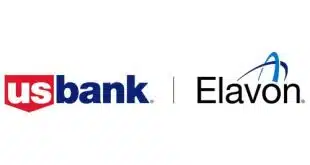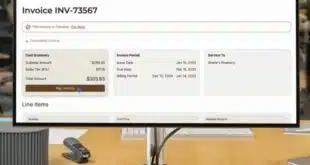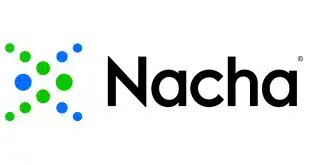Forget an a la carte approach to point-of-sale services. EMV has trained restaurant operators to want inclusive features to help run their businesses.
Ask point-of-sale system experts to describe the state of EMV acceptance among restaurants, and their choice of words may not be what many expect, or would hope, to hear.
Hastily. Poorly. Still haven’t done it. These are just a sample of the descriptions of how well EMV acceptance has been adopted and implemented among restaurant operators. Now entering its fourth year of use in the United States, EMV chip card acceptance is meant to help squelch counterfeit card fraud and improve the overall security of point-of-sale payments.
When the card networks began introducing EMV in earnest in the United States in 2015, restaurant operators were less than thrilled about the change in payment technology. In addition to concerns about cost, training, and potential disruption to routine transaction volume that they shared with many other merchants, restaurant operators, especially those whose servers rely on tips, had questions about tips and how they would be handled by EMV systems.
Initial concerns, however, about not being able to adjust a ticket to accommodate a tip once the payment card was inserted were alleviated with education and software updates to POS terminals.
Still, three years later, restaurant operators continue to have a mixed reaction to the payment technology.
“I can’t tell you how many restaurants have come to us in a panic because their current provider gives them an unreasonable deadline, with even more unreasonable costs and conditions, to support EMV,” says Kevin Yien, product manager for Square for Restaurants at Square Inc. “It puts restaurants in a truly unfair position.” Hastily is the label he assigns to how well restaurants have handled EMV adoption.
‘Clunky’ Systems
Yien’s perspective is not unique.
“In general, EMV has been very poorly implemented at most restaurants, but that’s not the fault of restaurant owners,” says Jared Isaacman, chief executive of Shift4 Payments, an Allentown, Pa.-based payments provider. “EMV is a dated technology that is not particularly well suited to the hospitality market.” First developed in the 1990s, EMV had long been used outside of the United States prior to 2015.
While EMV is suited for retail transactions, where consumers just pay and go, Isaacman says, “There are numerous complexities present in restaurant operations.”
A couple of examples are incremental authorizations for open-bar tabs and tip adjustment. “These processes are much more complicated with an EMV card than they were with a swiped transaction,” he says. “Due to these operational hurdles, restaurant owners have been rather slow to implement EMV acceptance.”
That helps explain why Dax Dasilva, founder and chief executive of Lightspeed, a Montreal-based POS system developer, says that while there is a shift to cloud-based POS systems, “some restaurants still have clunky, legacy POS systems.”
“For those who have embraced the cloud, their expectations tend to be higher as they are looking for the systems to be more than just a POS,” Dasilva says.
Cloud-based POS systems are one tool restaurant operators use to navigate their way through EMV. These systems can make EMV acceptance easier, while adding other payment methods and providing better operational tools for the restaurant operator.
“The systems installed years ago are just as capable of inputting a cheeseburger and managing employees as a brand-new POS system, but what sets many new POS systems apart is the ecosystem of supporting applications that deliver additional value for restaurants,” Isaacman says. Some examples are systems with remote access enabled or that support third-party food-delivery services likes Grubhub and UberEats.
“So while I believe that the POS systems in most restaurants are capable of performing basic operational tasks, the majority lack the functionality and ecosystem support necessary to deliver meaningful value to restaurant owners,” he says.
A Bit of a Myth
Tips are unique to the restaurant industry, and tip adjustment is an example of the complexity of EMV in restaurants, Isaacman says. Initially, adapting the POS-system code to address the matter slowed EMV adoption, but that is changing, so it is not the perceived deterrent it once might have been.
Indeed, at CardFlight, a New York City-based point-of-sale specialist, the notion of tip adjustment being a problem for restaurants is seen as a bit of a myth, says Derek Webster, founder and chief executive.
“The card brands have been clear that the U.S. is a ‘chip-and-choice’ market and that post-authorization tip adjustments can still work in an EMV environment,” Webster says. “There is no reason that the standard restaurant payment flow [card placed in a check presenter and run through a POS system by the waiter] doesn’t work with EMV.”
Yien, at San Francisco-based Square, says there aren’t any particular complications around tip handling, but “Square absorbs a lot of the pain around chargebacks for restaurants.”
More telling is that many restaurant operators continue to use older POS systems, which, with advancements in technology and cloud connectivity, may hinder some elements of their businesses.
Yien says many POS systems for restaurants are “stuck.” The restaurant market has long been dominated by legacy POS system makers that, as Yien says, had high upfront costs, long-term contracts, and difficult maintenance requirements.
Cloud-based systems ushered in greater mobility and lower costs, Yien says, but may fall short in other areas. For example, first-generation cloud-based POS systems operated a certain way, leading the merchant to think all subsequent versions should follow suit.
“This leads restaurants to believe they need certain features from their point of sale, when in reality they could simplify their operations and workflows,” he says. “As with any technological shift, the transitionary period is uncomfortable and can leave restaurants feeling stuck between the evil they know and the alternatives they are [reluctant] to test.”
‘Supremely Savvy’
Though the EMV transition for consumers and issuers may have been mostly completed, it’s still a topic for merchants, especially restaurant operators.
Yien says EMV comes up in sales pitches quite a bit. “There’s usually an immense sense of relief when they hear that Square offers EMV and PCI compliance as a part of our basic payments processing, with no hidden fees, after being told they’ll have to pay ridiculous extra fees with other providers simply to meet compliance standards.”
At Shift4 Payments, which sells POS systems under the POSitouch and Harbortouch brands, among others, basic EMV acceptance is assumed, Isaacman says. “We are seeing growing demand for more advanced EMV solutions, such as pay-at-the-table and order-at-the-table devices,” he says.
The awareness of EMV, and payments security and fraud in general, tends to vary among restaurant operators. At Square, Yien says some restaurant operators remember past experiences.
“Some are industry vets that have been burned and have a deep understanding,” he says. “In general, though, restaurant operators are supremely savvy. They have a deep understanding of everything that could impact their business, especially in a negative way, and take the time to ensure they are protected.”
In Isaacman’s experience, a restaurant operator’s knowledge may be affected by the size of the restaurant. “Single-location SMB restaurants care much more about the affordability, features, and functionality of the POS and the extended POS ecosystem,” he says (SMB refers to small-and-medium-size businesses). “For larger merchants, security features like PCI-validated [point-to-point encryption] and tokenization are a bigger part of the conversation.”
Must-Haves
EMV, at least, elevated the discussion about security and fraud for many. Restaurant operators, especially those using cloud-based POS systems that maintain compliance with PCI Security Standards Council mandates and related standards, benefit from offloading that.
Shift4, for example, long has offered tokenization services, which scramble the actual card data into a string of random digits that are useless in a hacker’s hands.
“Historically, those capabilities were limited to only the largest enterprise merchants that could afford the functionality,” Isaacman says, “but at Shift4 we offer the same security technology to protect our smallest SMB customers that we use to protect half of the hotels and restaurants in Las Vegas.”
Other features, once relegated to larger users, are also migrating to smaller merchants. At Lightspeed, Dasilva says adjustable floor plans, customizable menus, easy access to reservations, mobility for tableside ordering, and sales reporting are a few of the must-haves they want now.
The must-have list is long, too, for CardFlight’s Webster. “What aren’t they requesting?” he says. “Offering a true restaurant POS requires a lot of features and flexibility to allow the restaurant to customize to their needs,” he says.
Besides having the ability to modify menu selections, provide kitchen systems, and meet order-management needs, “integrated online ordering is probably one of the newest and fastest-growing parts of the market,” Webster says.
‘Directional Hints’
Indeed, the future of the restaurant POS system will be more hub-like and better able to manage services like online ordering.
“The more interesting question is what happens to restaurants in the next two years,” Yien says. “While no one can predict the future, these are some patterns we are all seeing and experiencing that give directional hints.”
Restaurants are seeing labor costs increase, Yien says, directly impacting margins. “This will put pressure on restaurants to find ways to either grow their sales through alternative revenue streams or reduce costs through operational efficiencies,” Yien says.
“Online ordering is the most prevalent thing that will become more and more integrated with the point of sale,” he continues. “In essence, we’ll see the point of sale move closer to the customer.”





